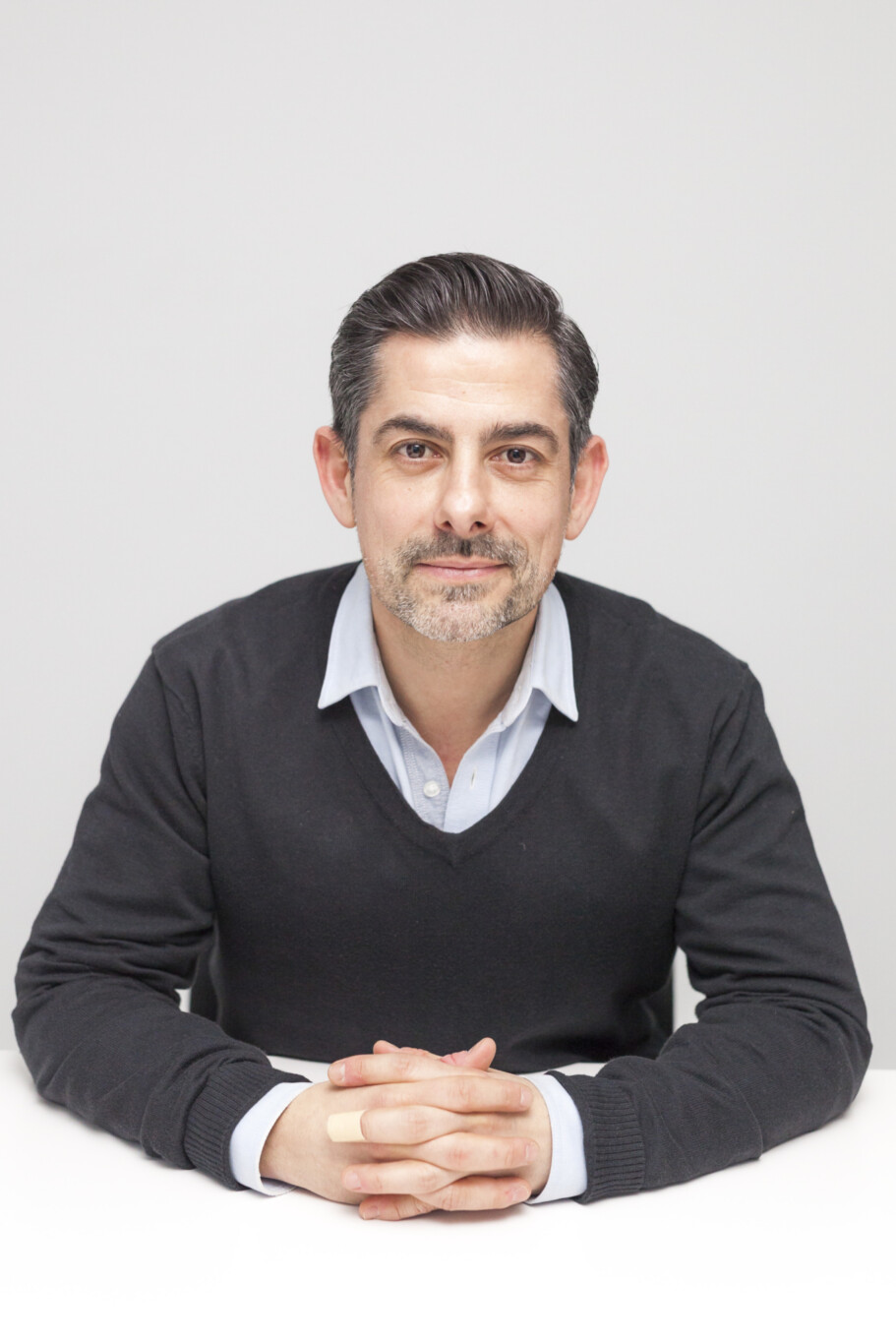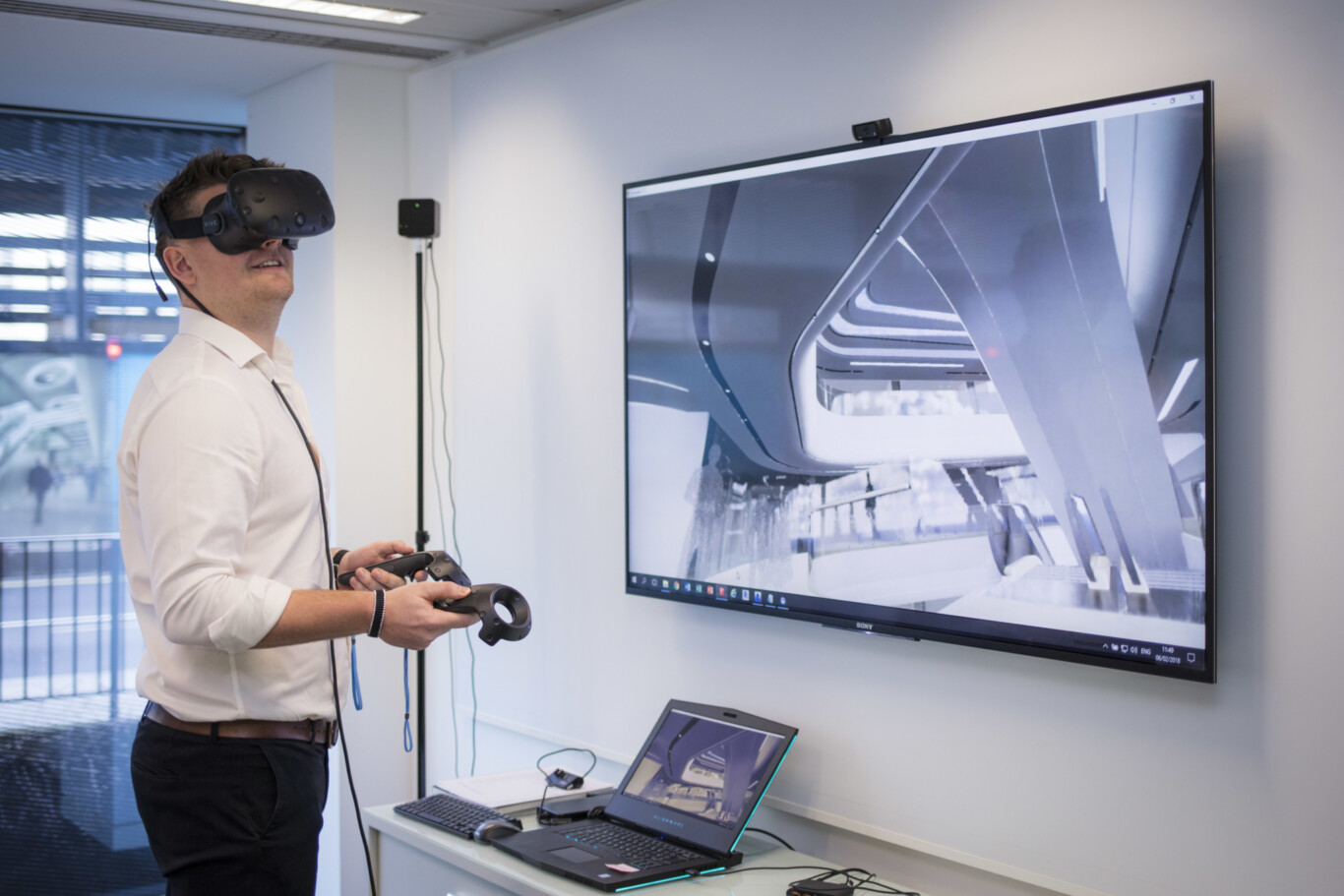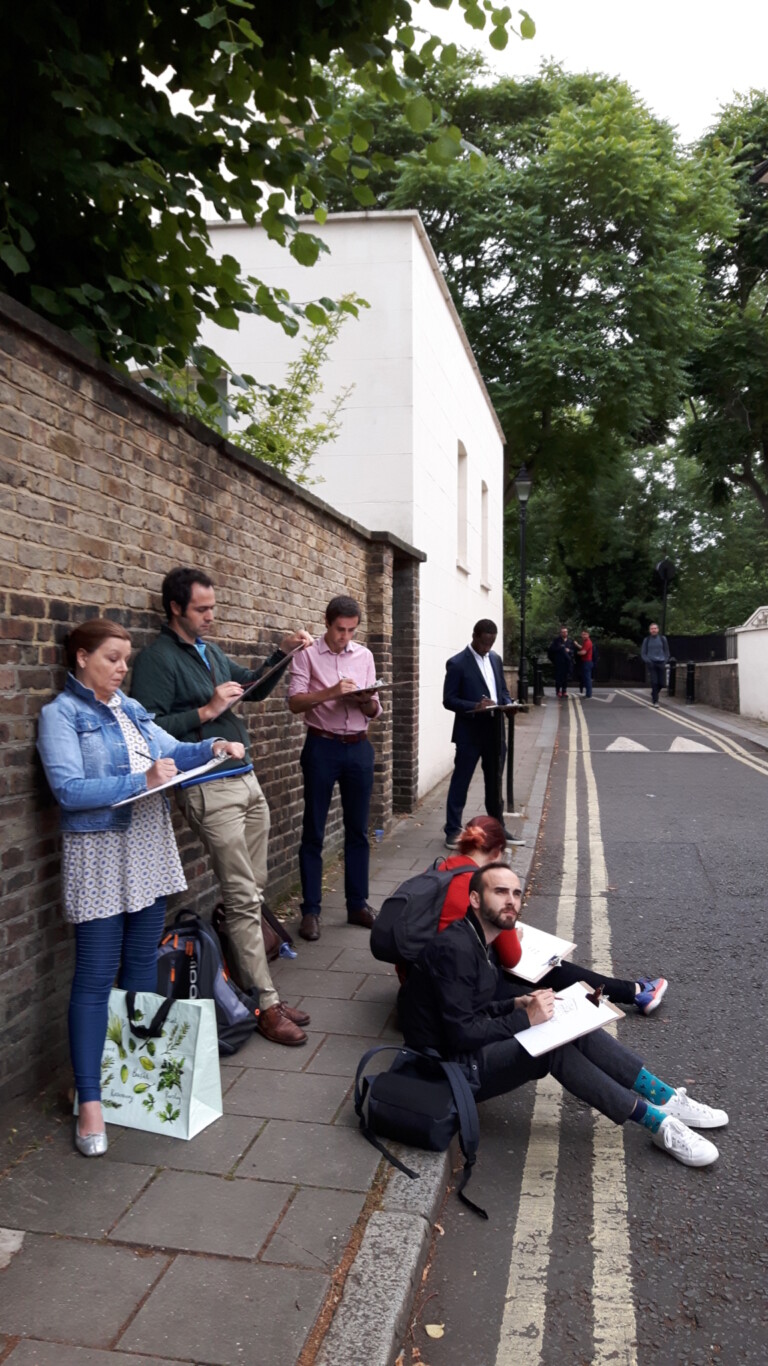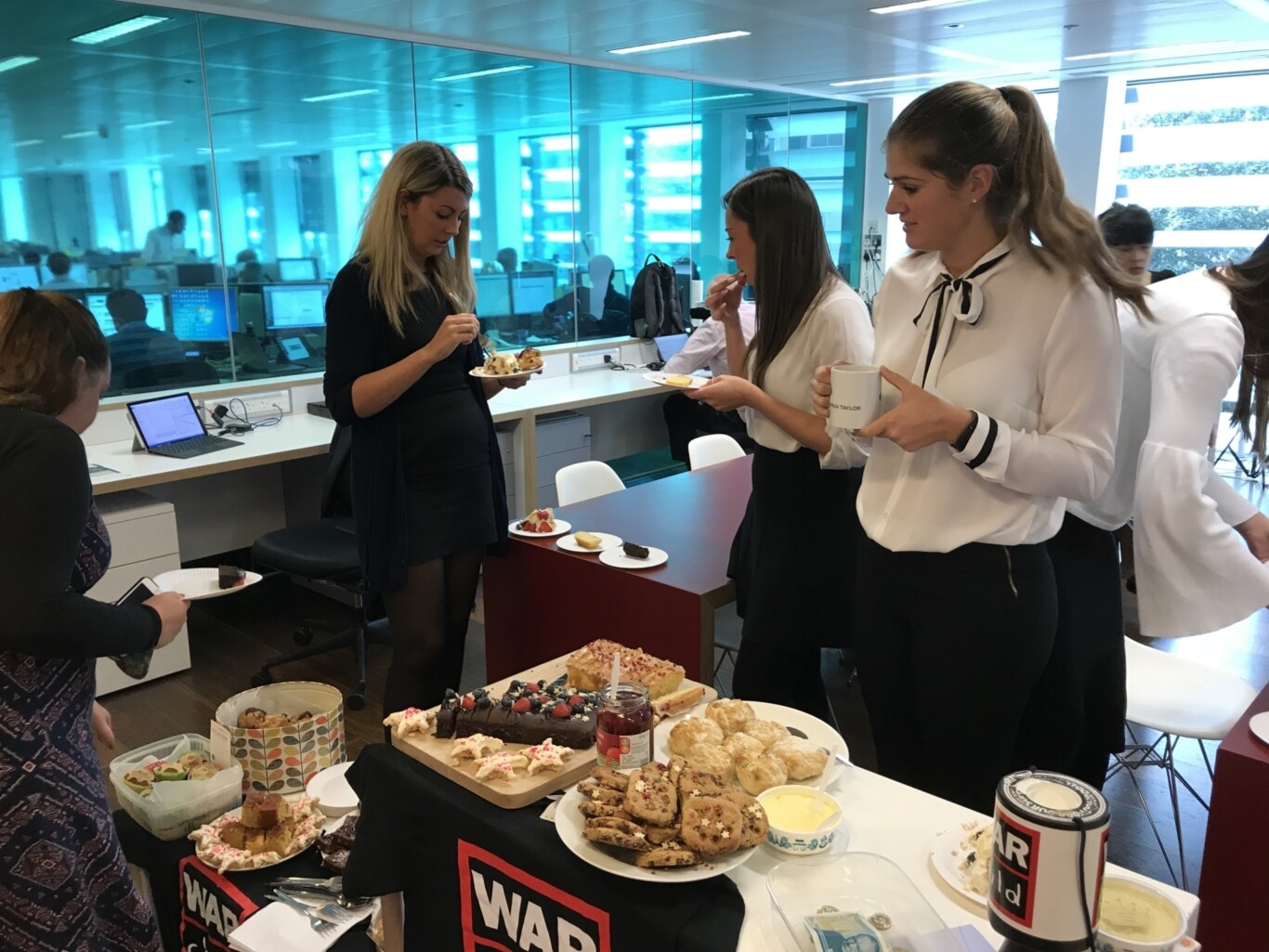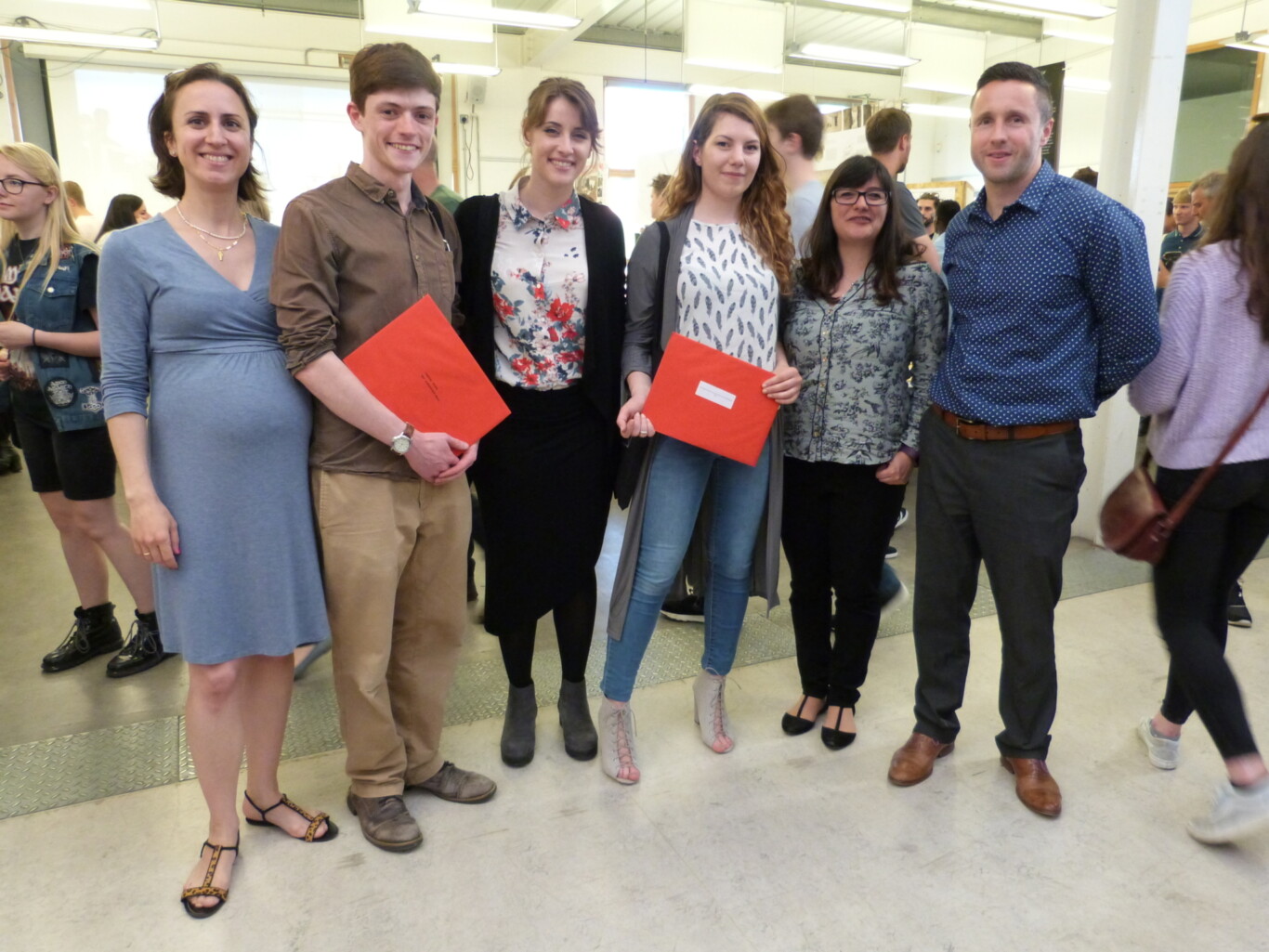
The pivotal role of Chapman Taylor’s Executive Group
Chapman Taylor’s UK studios, and a number of our international studios, each have their own individual Executive Groups – teams of dedicated staff who work together to foster better connections between people, teams and studios. In this profile, we talk to London studio Executive Group lead Miguel Berraondo about what the Executive Group does globally and why it is so important to the company.
Tell us about the Executive Group’s structure and purpose.
The Executive Group, which Main Board Director Tim Partington oversees, is now composed of four focused sub-groups – CT Connect, CT Social, CT Learning and CT Studio – all of which work collaboratively towards the same end, which is to better connect our staff at all levels of the company. The four sub-groups are interlinked, but we allocate roles and tasks to particular sub-groups and particular team members so that they can act as a go-to contact for anyone wishing to find something out, suggest something etc.
We operate across all the Chapman Taylor UK studios, with London, Bristol and Manchester each running its own Group, working with the others as part of a network. We are also rolling out the format internationally to our global studios.
University of the West of England End-of-Year Awards in Bristol
What are the roles of the Executive Group’s four sub-groups?
CT Connect:
CT Connect promotes links within and between all Chapman Taylor’s studios, as well as with other professionals working in the same sectors that we do. We co-ordinate our inter-studio creative competitions and our international team posters across Chapman Taylor’s international studios. In this way, we foster the sense of the Chapman Taylor being one family in which everyone is aware that they are part of a large network, and that they are noticed everywhere.
CT Connect also organises studio breakfast meetings, usually once a month, in which everyone meets up to hear about what’s going on across the company – whether that be projects in the pipeline, new additions to the staff or social events that are taking place.
CT Social:
CT Social arranges social events and promotes interaction within and between our studios. Our aim is to create something which breaks the idea of just socialising within your individual team, allowing everyone a chance of spending time with other teams and different Directors. This could involve singing at a a karaoke evening, taking part in a quiz night or attempting one of our three peaks hiking challenges all aimed at creating stronger connections across all levels of our studios.
CT Social organises poker nights, regular table tennis competitions, bake-offs, barbecues and several other events, all of which are popular with staff. What is important is that the events cover a wide range of interests, so that everyone has a chance to become involved.
CT Learning:
CT Learning plays an important role in helping our staff to develop expertise and to share knowledge with each other. A crucial element is the CPD (Continuing Professional Development) programme it organises – an ongoing and regular series of talks and demonstrations by both in-house and external experts, across a diverse range of topics relevant to a design practice such as ours. There is usually a CPD session every week, sometimes more often.
CT Learning also runs the Student Support Group for staff studying for their RIBA Part III exams. The Student Support Group’s meetings are an interactive process, and we encourage those attending to ask as many questions of more experienced members of staff as they need to. Part III mentoring by experienced architects is a key part of this support process.
Another part of CT Learning’s remit is to improve industry knowledge, practice guidelines and technical support. There are lots of very knowledgeable people working at Chapman Taylor, and it is very useful to identify where there are pools of knowledge so that we can create presentations that everyone will see. We can do this via three formats – mini-presentations at breakfast meetings, evening pin-up presentations and CPD sessions.
Our Manchester and Bristol studios’ CT Learning teams have developed a university liaison programme, visiting universities to attend exhibitions and to teach. The London studio is looking to develop a similar relationship with a well-known university. One major advantage of developing these contacts is that we are well-placed to identify up-and-coming talent at an early stage, and to foster connections with the best students as potential Chapman Taylor employees.
CT Studio:
CT Studio promotes creativity and good design among Chapman Taylor’s teams. Competitions are the main way in which we do this, with regular inter-studio design and photo competitions, and also through the creation of evening pin-up presentations to discuss the development of current projects.
The group also organises life drawing and street sketching sessions, in which people practice their drawing skills – an important communication tool for any architect and designer. We often have to sketch in meetings with clients and consultants, so being able to demonstrate good hand-drawing skills is important. These sessions also offer an enjoyable way of socialising with others, and they have proved to be very popular.
CT Learning:
CT Learning plays an important role in helping our staff to develop expertise and to share knowledge with each other. A crucial element is the CPD (Continuing Professional Development) programme it organises – an ongoing and regular series of talks and demonstrations by both in-house and external experts, across a diverse range of topics relevant to a design practice such as ours. There is usually a CPD session every week, sometimes more often.
CT Learning also runs the Student Support Group for staff studying for their RIBA Part III exams. The Student Support Group’s meetings are an interactive process, and we encourage those attending to ask as many questions of more experienced members of staff as they need to. Part III mentoring by experienced architects is a key part of this support process.
Another part of CT Learning’s remit is to improve industry knowledge, practice guidelines and technical support. There are lots of very knowledgeable people working at Chapman Taylor, and it is very useful to identify where there are pools of knowledge so that we can create presentations that everyone will see. We can do this via three formats – mini-presentations at breakfast meetings, evening pin-up presentations and CPD sessions.
Our Manchester and Bristol studios’ CT Learning teams have developed a university liaison programme, visiting universities to attend exhibitions and to teach. The London studio is looking to develop a similar relationship with a well-known university. One major advantage of developing these contacts is that we are well-placed to identify up-and-coming talent at an early stage, and to foster connections with the best students as potential Chapman Taylor employees.
CT Studio:
CT Studio promotes creativity and good design among Chapman Taylor’s teams. Competitions are the main way in which we do this, with regular inter-studio design and photo competitions, and also through the creation of evening pin-up presentations to discuss the development of current projects.
The group also organises life drawing and street sketching sessions, in which people practice their drawing skills – an important communication tool for any architect and designer. We often have to sketch in meetings with clients and consultants, so being able to demonstrate good hand-drawing skills is important. These sessions also offer an enjoyable way of socialising with others, and they have proved to be very popular.
How does the Executive Group communicate with the studio as a whole?
The main platform for us in London is the monthly breakfast meeting, which all employees are encouraged to attend. The breakfast meetings started four years ago and have been a great success. Our latest breakfast meeting was standing room only and we are seeing excellent engagement at the meetings with the Directors and Associate Directors, and a high demand for speaking slots so that teams can talk about their work to the whole office.
Chapman Taylor’s intranet is also becoming more important – we have a dedicated area on the intranet system on which we can communicate with all of our studios – people in our Bangkok studio can see what people in our Bristol studio have been up to, and vice versa. We liaise with our Graphics team to look into how we might create micro-websites for particular events, such as the one we created for the 2017 international design competition.
How do you create a successful social programme for Chapman Taylor?
The most important factor is the diversity of the offer and the variety of people who get involved – people who might be attracted to life drawing might have no interest in karaoke or poker events, meaning that we see different combinations of people depending on what’s taking place.
The yearly challenge we organise – a mountain hiking expedition, which last year was the Yorkshire 3 Peaks challenge – has been very successful and has garnered great feedback from those who have taken part. We also organise a variety of sporting events, as well as more sedate activities. All of these create very good connections within and between all of our studios.
Of particular importance are the charity events we run. We have now appointed a co-ordinator in charge of our approach to charitable fundraising, Kazuyo Matsuda, who will designate a particular charity with which we will work and to which all our raised funds will be donated. We have worked with charities such as War Child, Cancer Research UK, Wood Street Mission and Maggie’s Centre, not only to raise funds for them, but also to see how we could better collaborate to promote their causes. We run bake sales, sporting events, food bank donations for Big Red Box and have even held a sponsored rubber duck race!
The yearly challenge we organise – a mountain hiking expedition, which last year was the Yorkshire 3 Peaks challenge – has been very successful and has garnered great feedback from those who have taken part. We also organise a variety of sporting events, as well as more sedate activities. All of these create very good connections within and between all of our studios.
Of particular importance are the charity events we run. We have now appointed a co-ordinator in charge of our approach to charitable fundraising, Kazuyo Matsuda, who will designate a particular charity with which we will work and to which all our raised funds will be donated. We have worked with charities such as War Child, Cancer Research UK, Wood Street Mission and Maggie’s Centre, not only to raise funds for them, but also to see how we could better collaborate to promote their causes. We run bake sales, sporting events, food bank donations for Big Red Box and have even held a sponsored rubber duck race!
What difference has the Executive Group made to Chapman Taylor in the time you have been involved with it?
I think that many of the things we work to organise and achieve are becoming taken for granted now, which is a testament to our success. For example, the improvement in connectivity between teams and individuals which we now have – if we weren’t working to assist in that process, a lot of progress would be lost.
I’m particularly happy with the international connection that has been established, such as the posters we put up in each studio which exhibit other studios’ people and projects. We needed to showcase the teams and faces involved to everyone, letting everyone know that they are part of a much larger network and are valued as such. It’s a very simple thing to do, yet very effective. We are now looking into producing videos which do the same job in a new format.
It’s all part of the one goal, which is to integrate the studios and the people who work for us, letting it be known that we all work as one. I think that we are achieving that.
For more information about the Executive Group’s activities, please contact:
Miguel Berraondo
Senior Architect (London studio)
mberraondo@chapmantaylor.com
It’s all part of the one goal, which is to integrate the studios and the people who work for us, letting it be known that we all work as one. I think that we are achieving that.
For more information about the Executive Group’s activities, please contact:
Miguel Berraondo
Senior Architect (London studio)
mberraondo@chapmantaylor.com
